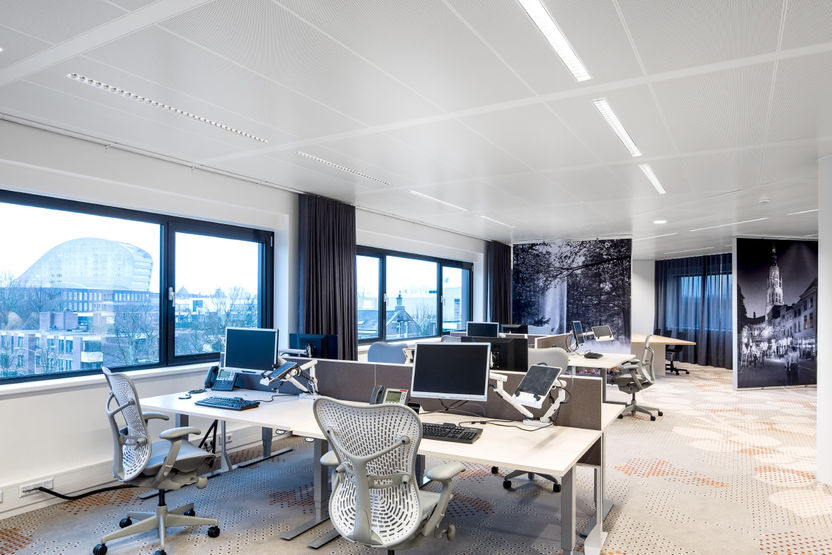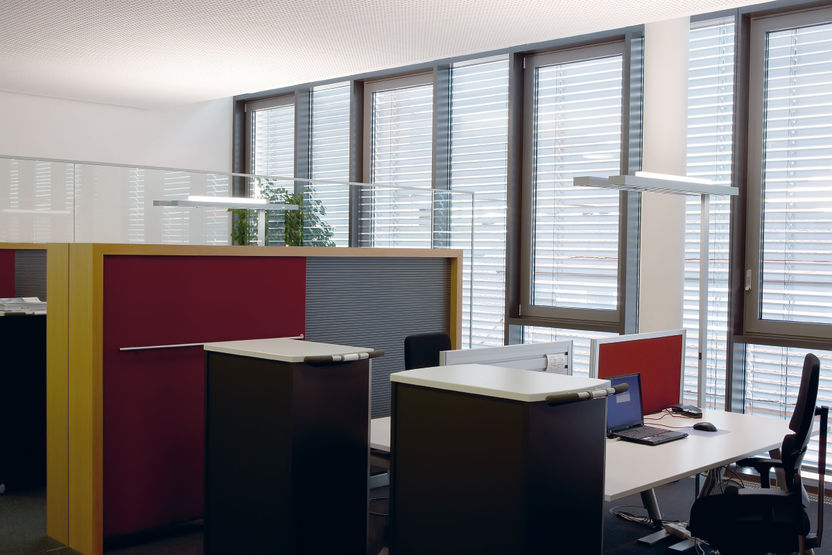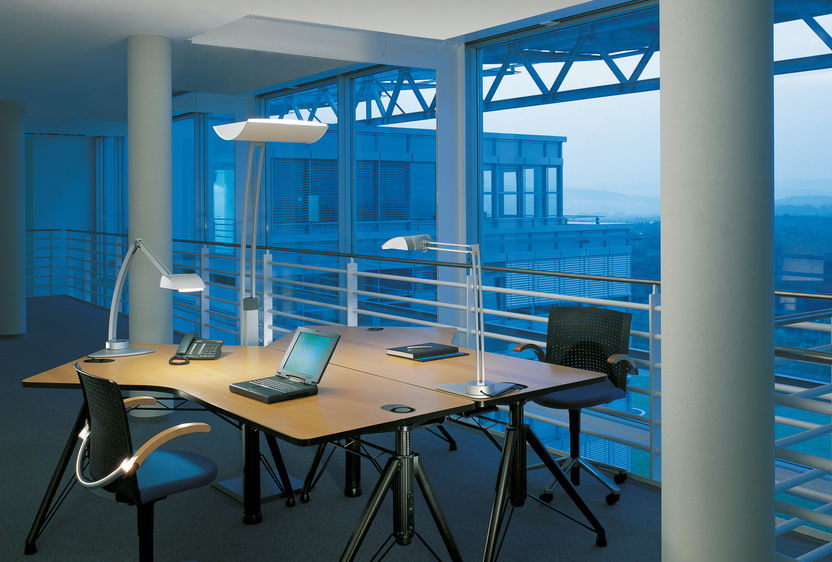In office spaces – regardless of size, specific visual tasks and further aspects – different lighting concepts can be implemented. Examples are given in figure.
Lighting concepts
Room-based lighting (figure) is a uniform lighting of the room. It should be used if mostly similar visual conditions are desired for all locations, if working areas and their spatial volume are unknown at the time of design, and if a flexible VDU workstation arrangement is desired.
Working area-based lighting (figure) is the lighting of individual working areas and their immediate surroundings (see also chapter "Surrounding areas"). It requires knowledge of the exact position of workstations and working areas or the use of mobile lighting systems. It is recommended for rooms with workstations where visual and lighting requirements differ or where "working islands" are to be created by varying brightness levels in order to positively influence the visual room atmosphere.
Partial area-based lighting (figure) is lighting where every visual task area is illuminated separately, facilitating enhanced personalisation capabilities for lighting conditions. For "screen work" (according to DIN 5035-7) a partial area of 600 mm · 600 mm is illuminated in addition to the basic lighting, which can be working area-based or room-based, e.g. using a workstation luminaire intended to facilitate reading and writing on horizontal visual tasks with increased illuminance.
Partial area-based lighting can be used if the lighting of individual areas is to be adapted to different tasks or work equipment, particularly challenging visual tasks or individual visual faculty of the user (e.g. an older person) or to individual, varying lighting conditions. With mobile lighting systems, this lighting concept can also be applied if the arrangement of workstations is unknown at the time of design.

(a) Room-based lighting

(b) Working area-based lighting

(c) Working area-based lighting supplemented by partial area-based lighting
Figure 3.96: Office lighting concepts